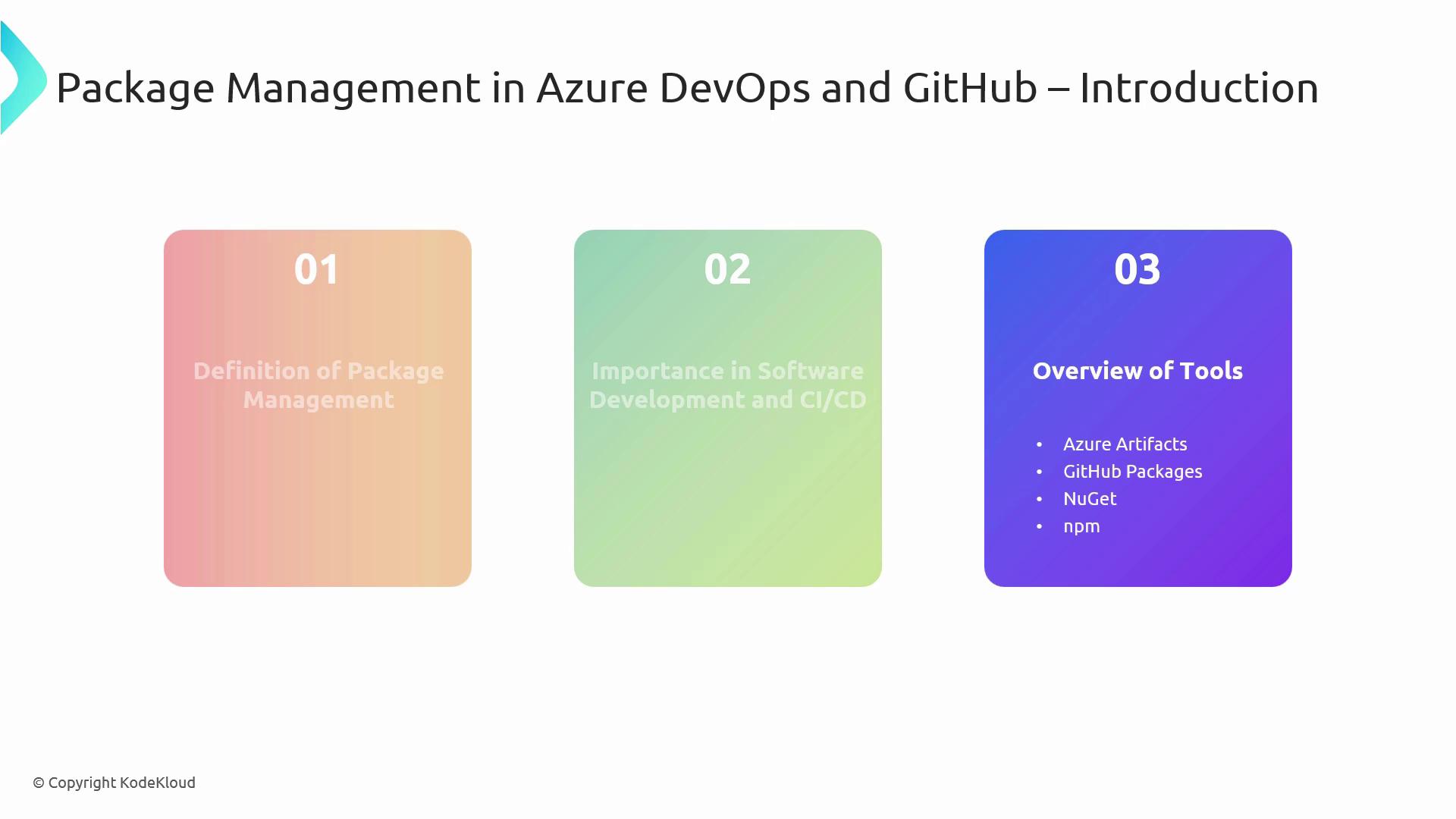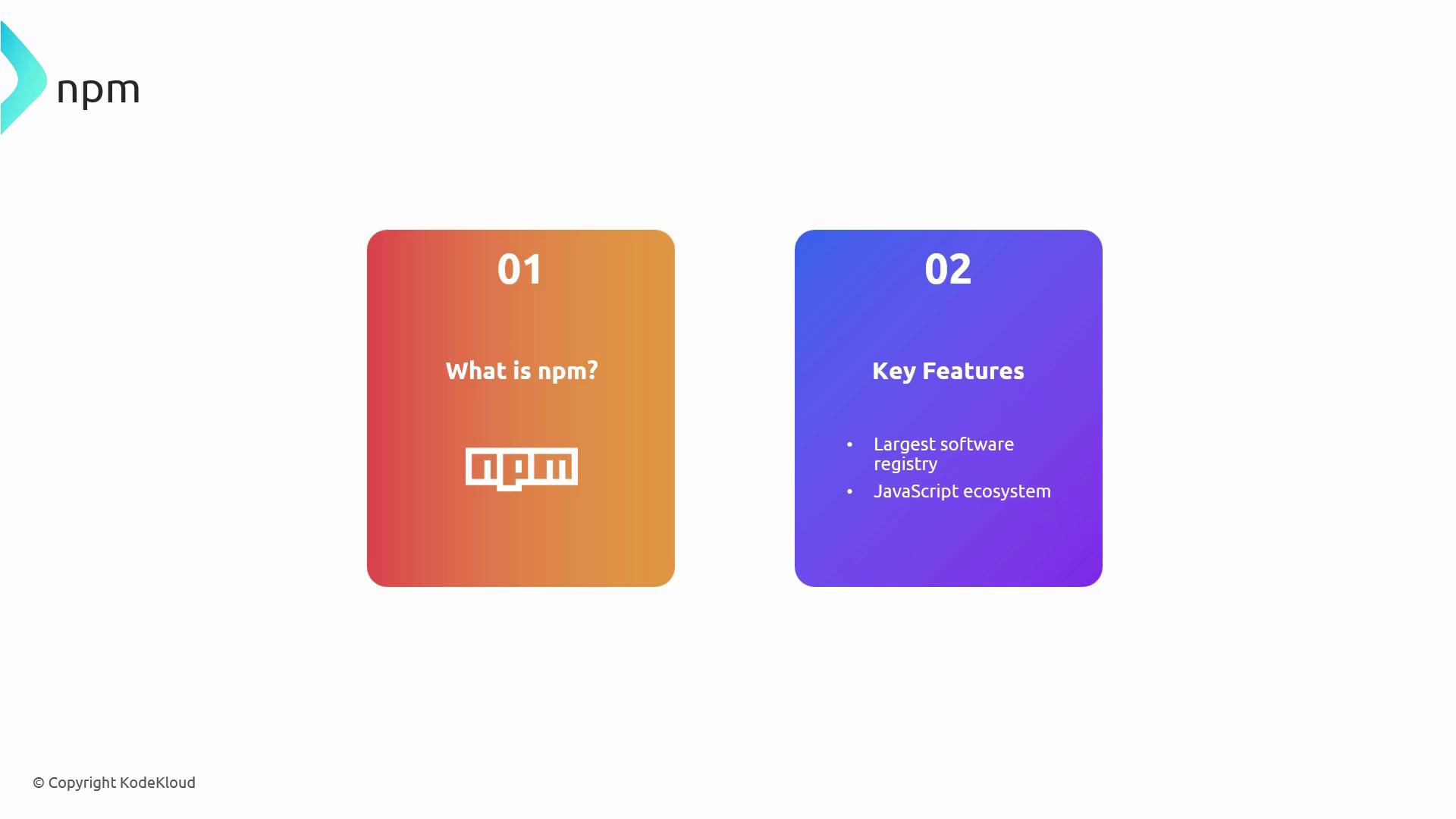AZ-400: Designing and Implementing Microsoft DevOps Solutions
Design and Implement a Package Management Strategy
Discovering Package Management Tools
Design and Implementation of a Package Management Strategy
Introduction
In this lesson, we explore package management in Azure DevOps and GitHub—critical components of modern software development and CI/CD pipelines. We’ll start by defining package management, then highlight why it matters. Finally, we’ll dive into four main tools:
- Azure Artifacts
- GitHub Packages
- NuGet
- npm

Key Package Management Tools at a Glance
| Tool | Platform | Supported Packages | Highlights |
|---|---|---|---|
| Azure Artifacts | Azure DevOps | NuGet, npm, Maven, Python, universal feeds | Upstream sources, seamless CI/CD integration |
| GitHub Packages | GitHub | npm, NuGet, Maven, RubyGems, Docker images | Native auth, GitHub Actions workflows |
| NuGet | .NET | .NET libraries and tools | Visual Studio & dotnet CLI integration |
| npm | Node.js | JavaScript modules | Vast registry, script support, dependency audit |
Why Package Management Matters
Consistent versioning, faster builds, and secure dependency control are essential for scalable CI/CD. A unified registry reduces “works on my machine” issues and simplifies audits.
Azure Artifacts
Azure Artifacts is a universal package management solution built into Azure DevOps. It allows teams to:
- Store and version packages in one central location
- Proxy public registries using upstream sources
- Integrate directly with Azure Pipelines for seamless CI/CD
# Example: Publish a NuGet package in Azure Pipelines
steps:
- task: NuGetCommand@2
inputs:
command: 'push'
packagesToPush: '**/*.nupkg'
publishVstsFeed: 'your-feed-name'
Upstream Sources
Use upstream sources to cache npm, Maven, or PyPI packages—reducing build times and improving reliability.
GitHub Packages
GitHub Packages is GitHub’s integrated registry, working with GitHub Actions and repository permissions.
- Authentication: Uses your GitHub account credentials
- Supported Formats: npm, NuGet, Maven, RubyGems, Docker, and more
- Access Control: Repository-level permissions and fine-grained scopes
# Example: Publish npm package with GitHub Actions
name: Publish npm Package
on:
push:
tags:
- 'v*.*.*'
jobs:
publish:
runs-on: ubuntu-latest
steps:
- uses: actions/checkout@v2
- run: npm publish
env:
NODE_AUTH_TOKEN: ${{ secrets.GITHUB_TOKEN }}
NuGet
NuGet is the de facto package manager for the .NET ecosystem, providing:
- Distribution of libraries and CLI tools
- Integration with Visual Studio and the
.NET CLI - Automatic dependency resolution and semantic versioning
# Install a package
dotnet add package Newtonsoft.Json --version 13.0.1
# Restore dependencies
dotnet restore
npm
npm is the largest registry for JavaScript and Node.js packages, featuring:
- Over a million modules and growing
- Simple commands:
npm install,npm update - Scripts, semantic versioning, and built-in security audits

# Install dependencies
npm install
# Run a project script
npm run build
# Audit for vulnerabilities
npm audit fix
Security Tip
Regularly run npm audit and review advisories. Use lockfiles (package-lock.json) to ensure reproducible builds.
Further Reading
Watch Video
Watch video content